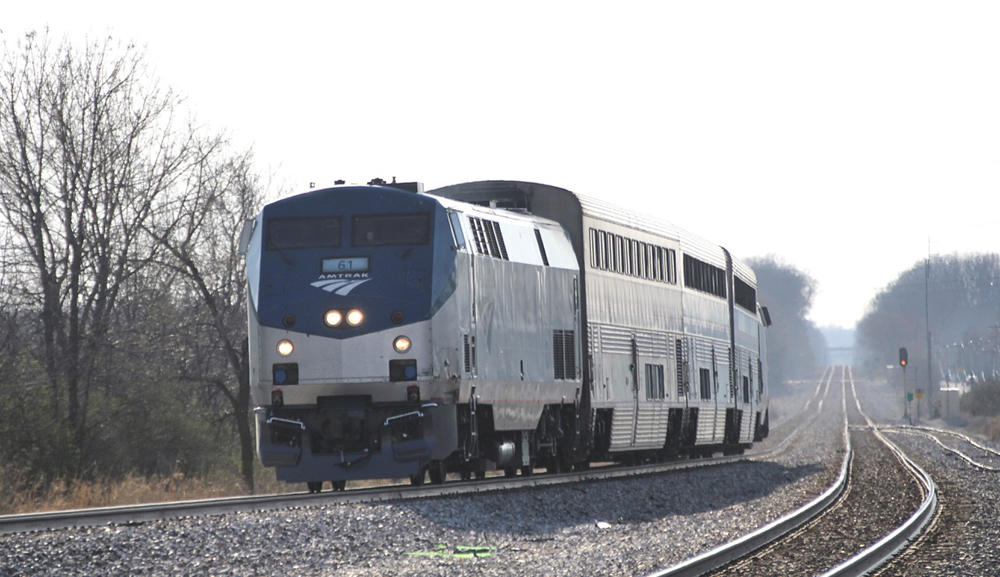
CHICAGO — Amtrak says ridership on the St. Paul-Chicago route is up 227% since the introduction of the Borealis, which made its debut one year ago today, on May 21, 2024.
Preliminary figures through the first 11 months of service show more than 205,800 riders on the Borealis, funded by the states of Minnesota, Wisconsin, and Illinois, and more than 293,000 on the route when including Empire Builder passengers.
“Amtrak is proud to celebrate a successful first year of the Borealis — and it’s only going to improve next year and beyond,” company president Roger Harris said in a press release. “Thanks to strong collaboration with our partners, we have exceeded expectations and provided a reliable, efficient, and safe way to travel between the Twin Cities and Chicago via Milwaukee.”
Officials in the three states also celebrated the year-old train’s strong ridership. Minnesota Transportation Commissioner Nancy Daubenberger said “the service has exceeded so many of our expectations, with ridership surpassing projections,” while Wisconsin Transportation Secretary Kristina Boardman said the train has “become a resounding success story and the ridership data reflects that. Said acting Illinois Transportation Secretary Gia Biagi, “The demand for convenient, reliable passenger rail in Illinois always has been strong, but the early success of the Borealis line shows that appetite extends beyond our borders and throughout the Midwest.”
Biagi also said Illinois looks forward to “working with our partner states on ways to strengthen service in the years ahead and explore future opportunities to offer more travel options for our residents and visitors.”
Borealis ridership has been strong from the start [see “Amtrak’s Borealis hits 100,000-passenger mark …,” Trains News Wire, Oct. 25, 2025]. Its early success sparked discussion of adding another train on the route, with Wisconsin beginning a study of that possibility late last year thanks to Federal Railroad Administration Corridor ID funding [see “Wisconsin begins study …,” News Wire, Nov. 29, 2024].






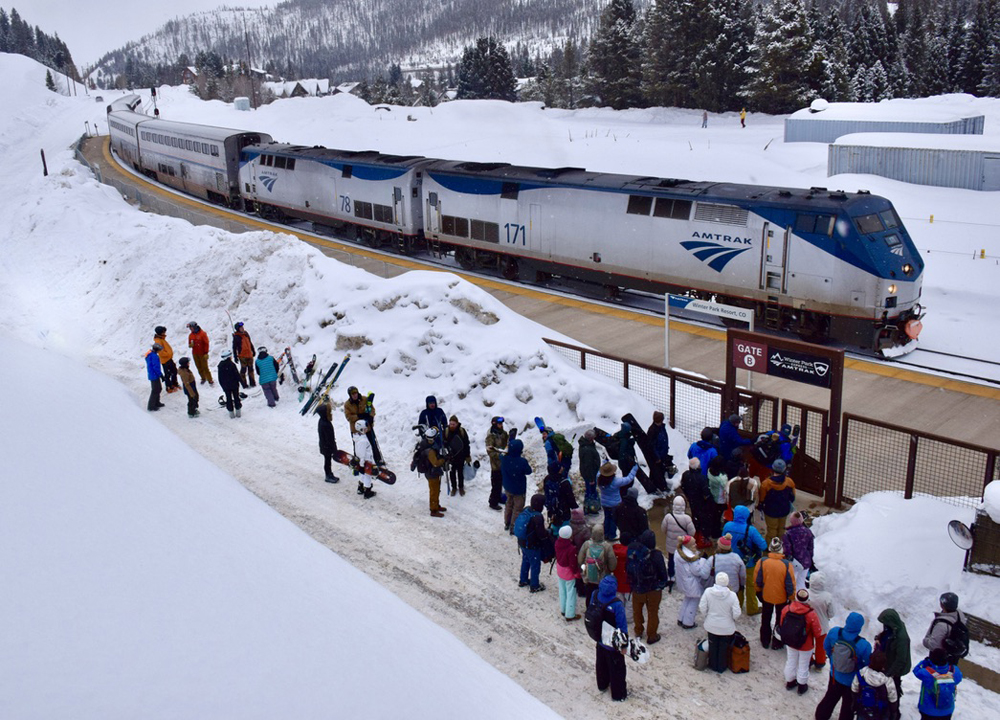
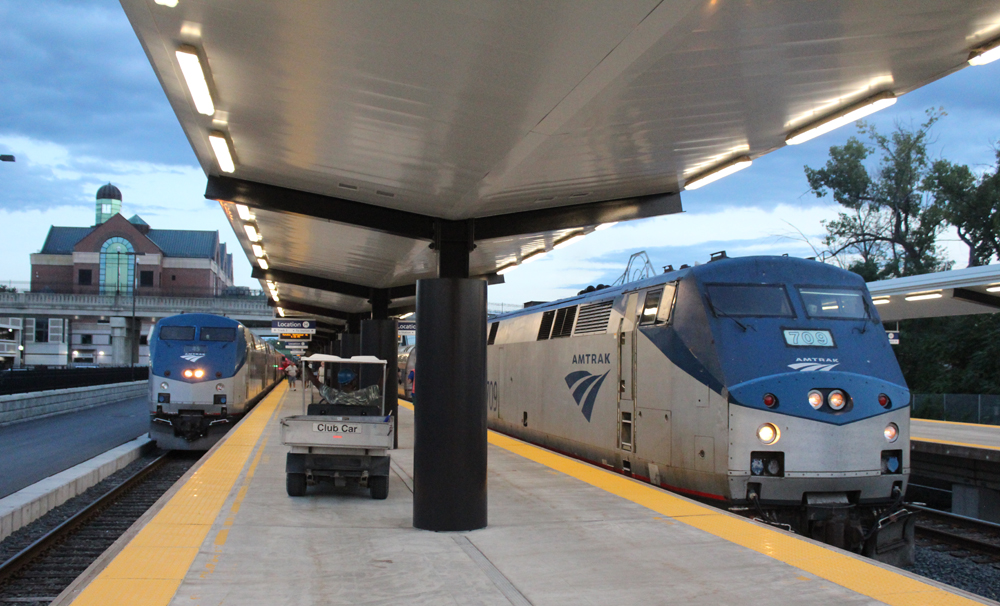
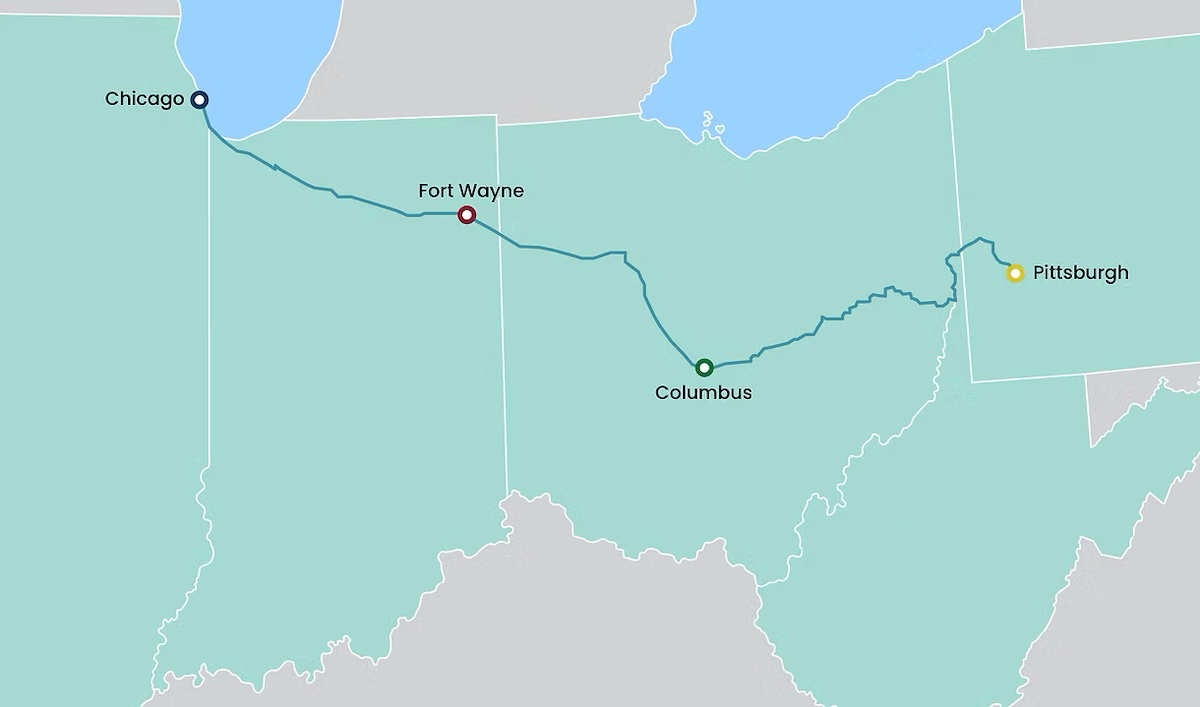
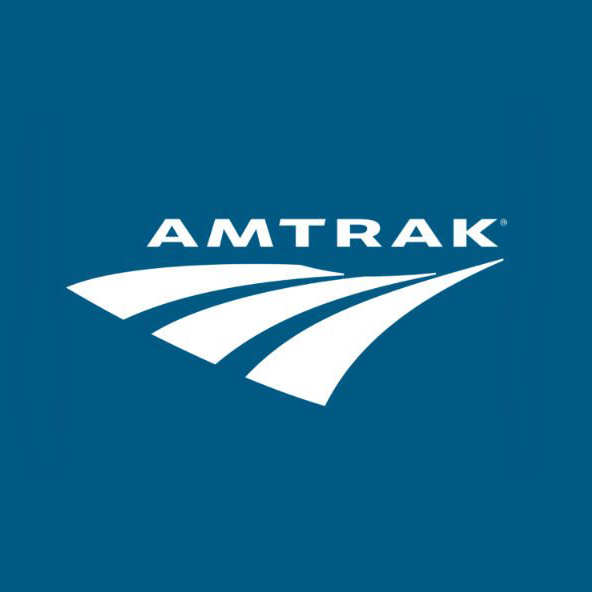
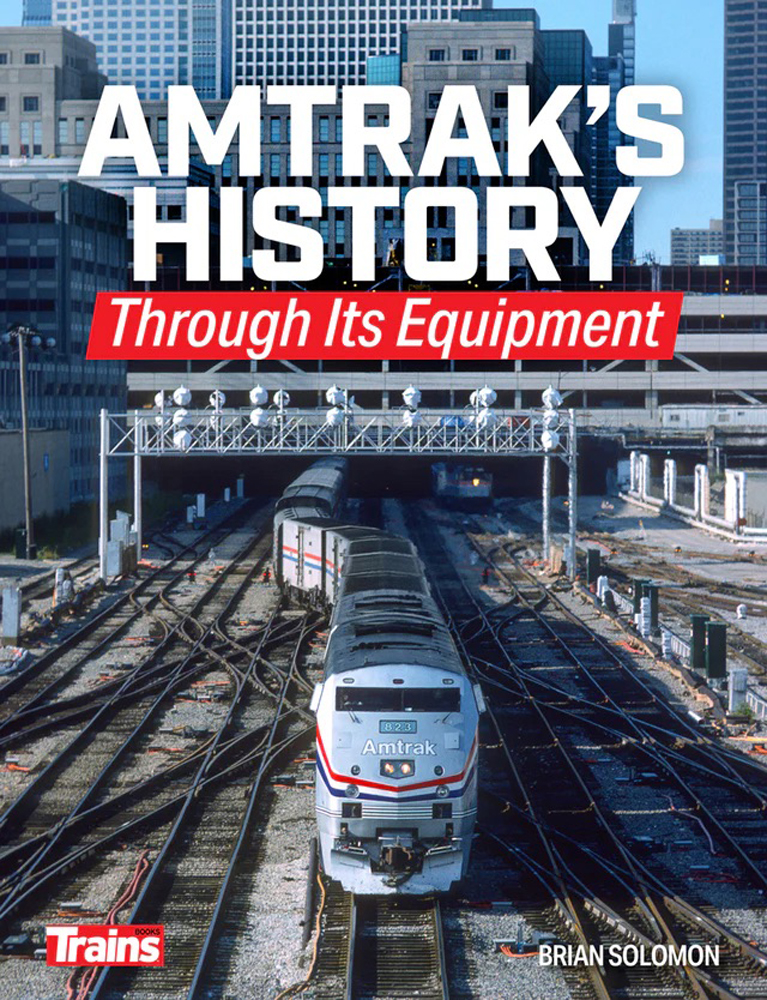
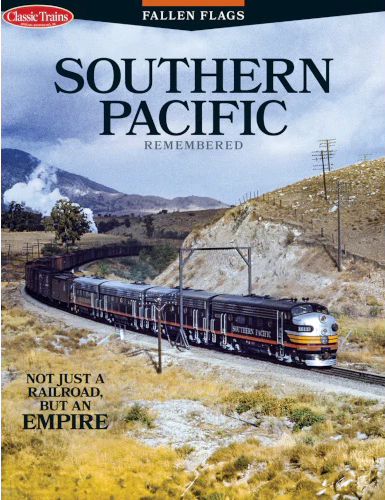
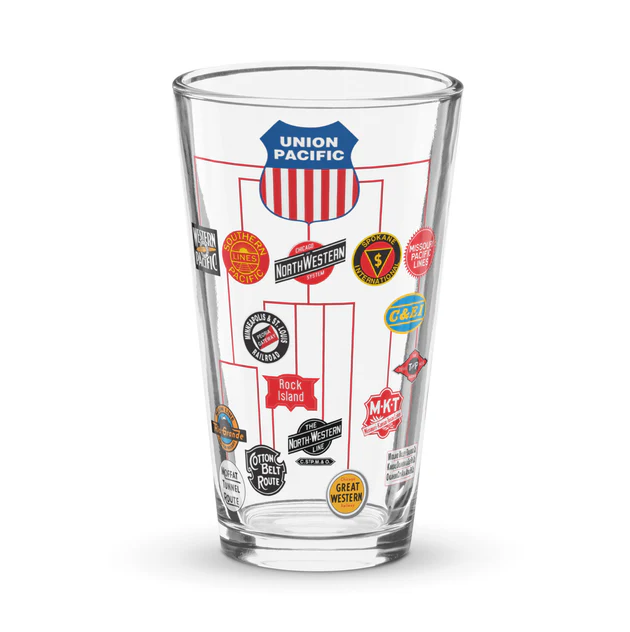
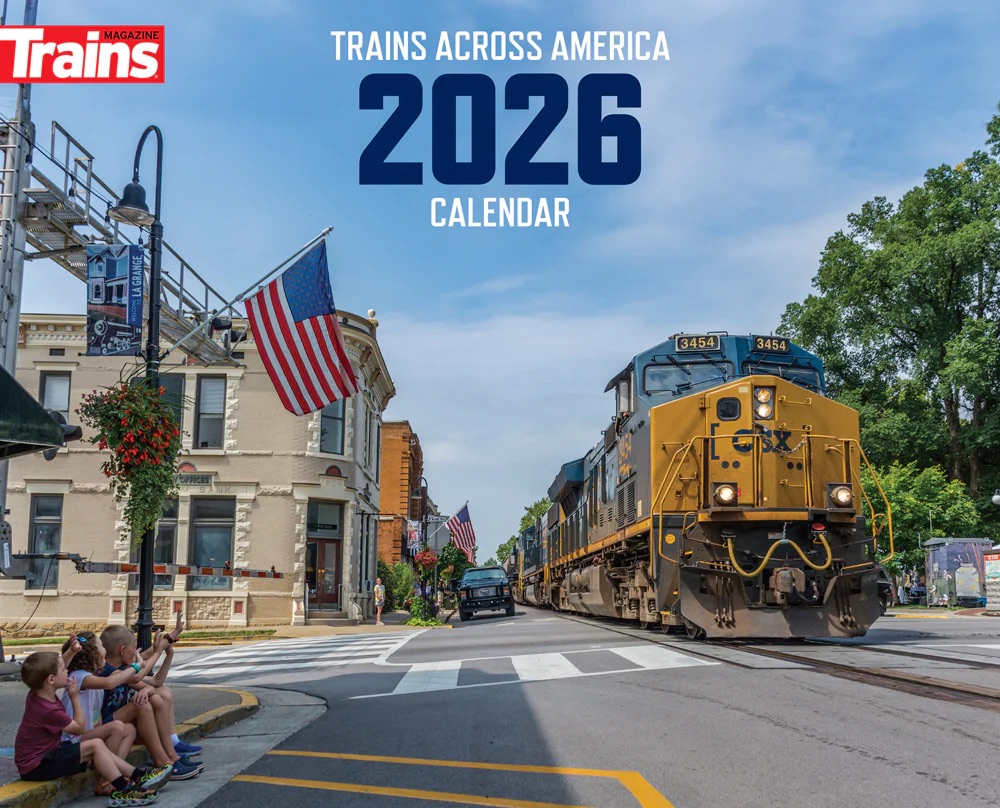
The Borealis could have even better ridership numbers, but is constrained by several major flaws:
(1) No west suburban Milwaukee stop to serve Waukesha and Washington Counties conveniently. A station somewhere around Pewaukee (using STH 164 as the main highway access) would make the train far more accessible for hundreds of thousands of people.
(2) No stop in Minneapolis.
(3) Given the rapid growth of the Western Twin Cities area, making a far western suburb the final stop – perhaps Anoka where a station exists for the Northstar. trains). With the locomotive on each end, the train could originate from and return to a servicing point (Northtown or Midway) for overnight servicing.
But never mind all that for now, as Amtrak is just not able to provide enough equipment to handle current peak days so why invite more riders?
I would urge everyone to contact your federal legislators and urge a major equipment build for Amtrak. No dream stuff not ready for 15 years – use existing platforms like Superliner, Surfliner, Viewliner, etc. Lots of good-paying jobs for US workers for years to come.
David,
I would like the Borealis to be extended to Fargo or even Grand Forks. No extra equipment would be needed, BNSF’S Staples Sub is mostly a two main track ctc railroad, stations are already in place and Wadena, Little Falls and Anoka could have stops.
Unlike the NLX, extending the Borealis to Fargo wouldn’t cost millions to start. Convincing Minnesota could be an obstacle
Michael: I very much agree with you. Fargo is a major BNSF hub and a good place to have an overnight layover, with lots of skilled railroaders around to look after the train, service it as needed and correct minor problems if necessary. Fargo metro is a very significant market.
Grand Forks might be a good turnaround point as well. Not as big as Fargo, but easier to reach for anyone visiting from Canada wanting to travel to Twin Cities or beyond to points east.
BNSF might raise capacity as an issue west of Big Lake, but I rather doubt that two more trains would be that hard to accommodate.
I have been in regular contact with my GOP senator (Ron Johnson) and have raised the idea of extension to Fargo with his office. It would make better use of the equipment (662 miles per day instead of 410) and increase ridership on current section.
FYI, “back in the day” on C&NW, we had a train (Peninsula 400) that ran a round-trip between Chicago and Ishpeming, MI every 24 hours for a total of just under 800 miles in one day.
I also strongly support restoration of the North Coast Ltd.
Charles, the deck has been stacked against passenger rail & even freight rail since the Fed Govt felt (wrongfully) it was their responsibility to fund roads & ultimately the Interstates. They were culpable of creating an overwhelming advantage to competition with public $$ when RR’s were moving the same passengers & freight reliably & maintained their own right of ways in a Capitalist manner without taxpayer support. You again use the term “subsidy” when you refer to passenger rail yet as has been noted before Hwys & aviation subsidies are called “investments”. Does this imply that Hwys & aviation are more legitimate? Why because Corp. & stockholders make money off them therefore making them “legitimate” ? Because “You” use them? Is it fair to raid the Treasury & increase deficit for one & not the other. Where will the tens of billions of dollars come from for these aviation upgrades? Is our tax money being used to raise Corp profits many of whom pay little or no taxes? Nobody gets rich with passenger rail. Chances are Amtrak will not get the $$$ allocated in the Infrastructure bill for new LD equipment but then you & others on this site continue to blame Amtrak for its problems & shortcomings. As long as this funding mindset remains Amtrak service will only continue to diminish.
forecast first year 155k actual 212k. How could number of riders be so under forecast? 157% of forecast. However, does this number include the local riders MKE CHI ? If so was it included om the forecast. This route is showing signs of a smaller example of Brightline potential riders.
How are the route improvements progressing?
Jow much capacity constraint has there been? Especially with the Horizon fiasco.
The real money loser is the highways! When was the last time they paid their way?The HTF went bankrupt in 2008, since then they (Congress) has siphoned over $150 BILLION from the Treasury to make up for the lost revenue due to not raising the gas tax with inflation & the endless expansion of roads & hwys, not to mention the billions of dollars subsidizing the trucking industry by not raising their annual Hwy Use Tax Don’t talk about passenger rail being profitable when hwys are adding billions of dollars to the deficit every year.
Galen —- I (for one, speaking for myself) do NOT talk about rail passenger profitability. I favor subsidizing passenger rail and local transit. I’m with you that the other modes (highway, aviation) should pay their own way out of user fees or tickets.
Where I part with you is your anti-highway policy. Highways carry a whole lot of traffic. Improved highways do it safer. Many years ago, NARP’s CEO Ross Capon published some anti-highway remarks. I sent him a letter saying that I had just read a Wisconsin DOT highway crash report, which included the entry on the form “Deputy Notifies Family”. In my letter, I said to Ross that improved highways save lives. Graciously, Ross wrote back thanking me for my input.
A moderately busy Interstate Highway carries 100K vehicles per day. That’s more vehicles per day than Amtrak carries passengers per day nationwide and into Canada.
Most Americans do not ride Amtrak. Take Amtrak’s annual ridership, assume that most riders ride several (or many) times per year (at the very least, a round trip), to calculate the number of separate individuals. That’s a drop in the bucket compared to the population.
I talk to people about my recent train trips – METRA, Amtrak Hiawatha, Borealis, and Cascade, MBTA Providence Line, Denver A-Train, Seattle light rail. Or maybe my lifetime train trips all over America and in three other countries, such as having been a regular commuter on the MBTA Red Line, long ago, or riding NYCTA all over the city when I was a college student. In response, the people I talk to might say they have ridden a train a couple of times in their entire life.
As one may recall, many European countries (France, Germany, Spain, Italy, etc.) are good examples of the harmonious combination of highways and railroads in passenger transport… Unfortunately, such a situation is not yet the case in North America.
Dr. Güntürk Üstün
Nice, but at what cost? Originally they were to run with 1 unit and turn it at MSP. That didn’t work out so they are running 2 units …. read increased fuel expense and the expenses with running a second one. ( Why are both units running for a 3 car train when one could be shut down saving fuel? ) .
Unfortunately, another money loser, as nice as it is. Wonder if there are any current financial statistics available?
https://tcbmag.com/is-the-amtrak-borealis-train-really-profitable/
It’s been rather clear from May 1, 1971 that Amtrak needs crash-worthy cab cars. with passenger seats.
This gives evidence that reliable medium length service can be successful Build conventional service to establish a base. Then add from that. This is opposite from the California HSR project.
As someone who lives within walking distance of the photo I’m rather proud not to be a Californian and very happy to be counted among the most strident opponents of CalHSR.
Last winter’s service interruption of the Boring Alice was a nasty blow —– aside from that, Ms. Boring Alice is the very avatar of what Amtrak needs to do, and how to accomplish it. Plus for the railfans in us, one heckuva nice train ride!
Flying between CHI and MSTP is a royal PITA. I hope this route continues to grow and get increased speeds.
Amtrak’s Borealis provides comfortable and affordable travel to wonderful places. It’s great to see so many people taking advantage of this service. Let’s hope it continues to improve. One should always recall that putting a new passenger train into service is much more troublesome than cancelling it.
Dr. Güntürk Üstün